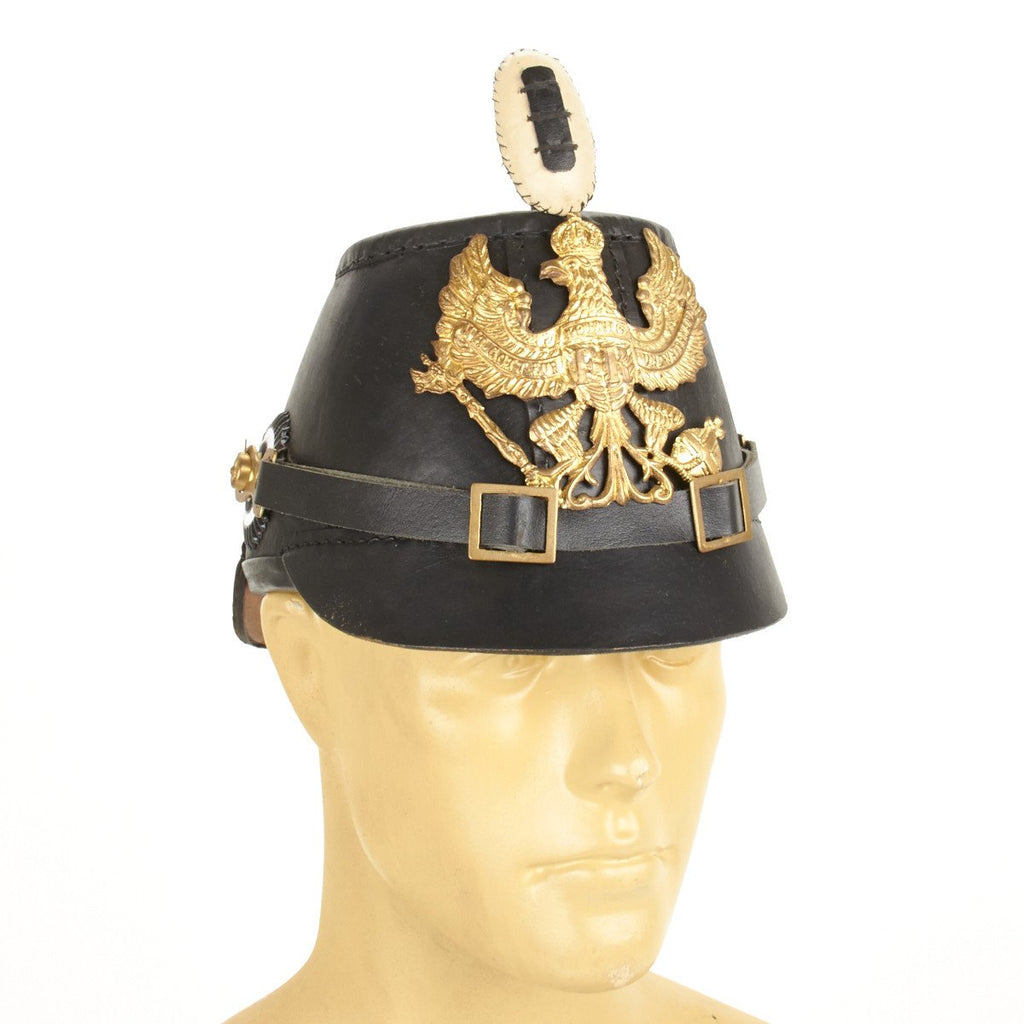Item Description
New Made Item: This is a fine reproduction of an original Prussian M-1860-1891 Jäger Enlisted Tschako in the IMA collection.
The tschako or shako is an It is made of black finished leather and features a high quality, gilded brass Prussian wappen (front plate), which features the state eagle clutching a scepter and crown, over the King's motto, MIT GOTT FÜR KOENIG UND VATERLAND (With God for King and Country, i.e. Prussia). This is held on by the correct leather wedges through the loops on the wappen.
It also has the correct M-91 side lug chinstrap fittings with attached cockades and a nice supple leather liner with central draw string adjustment. The top Feldzeichen (field Sign) cockade is included as well, but is packaged separately and must be installed by the customer. It does not have the vent holes seen in the early model shakos.
Fits up to sizes 61cm (US 7 5/8) with draw string central adjustment.
History of the shako-
The word shako originated from the Hungarian name csákós süveg ("peaked cap"), which was a part of the uniform of the Hungarian hussar of the 18th century. Other spellings include chako, czako, schako and tschako.
From 1800 on the shako became a common military headdress, worn by the majority of regiments in the armies of Europe and the Americas. Replacing in most instances the light bicorne, the shako was initially considered an improvement. Made of heavy felt and leather, it retained its shape and provided some protection for the soldier's skull, while its visor shaded his eyes. The shako retained this pre-eminence until the mid-19th century, when spiked helmets began to appear in the armies of the various German States, and the more practical kepi replaced it for all but parade wear in the French Army. The Imperial Russian Army substituted a spiked helmet for the shako in 1844-45 but returned to the latter headdress in 1855, before adopting a form of kepi in 1864. Following the Franco-Prussian War of 1870, military fashions changed and cloth or leather helmets based on the German headdress began to supersede the shako in many armies.
Although the mid-nineteenth century shako was impressive in appearance and added to the height of the wearer, it was also heavy and by itself provided little protection against bad weather as most models were made of cloth or felt material over a leather body and peak. Many armies countered this by utilizing specially designed oilskin covers to protect the shako and the wearer from heavy rain while on campaign. The shako provided little protection from enemy action as the most it could offer was in giving partial shielding of the skull from enemy cavalry sabres
- This product is available for international shipping.
- Eligible for all payments - Visa, Mastercard, Discover, AMEX, Paypal & Sezzle












